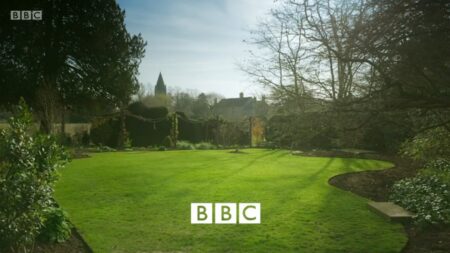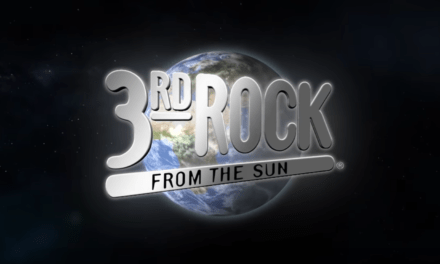Let me greet you in the good old Scouse fashion. Alright? Because, you know, things have been tough, haven’t they? Recent events have again highlighted that racism runs rife in our societies; that some women and men remain – shockingly remain – at risk of being murdered or mistreated in other ways. And then there continues to be the virus, the being stuck indoors most of the time with, if we are lucky, the use of a garden to help us. There is home schooling, and working or precisely not working, and cleaning, and worrying about elderly parents, and, depending on where you live, being completely flabbergasted by the, well, you know whom. The whole of Europe is talking about them, and not in a nice way. Of course, all this tough time may also be compounded by anxieties about our future relevance as Sarah Arnold highlighted in a recent blog. However, our (potentially diminished) relevance is nothing in comparison to the uncertainty that our students face, as Arnold also pointed out. Similarly, we should perhaps spend more time being concerned about those whose jobs are seriously at risk and whose source of income – the television industry – is being diminished as I type this. This was the topic of Manuel Damasio’s recent blog, and his excellent analysis of the combined forces of the suspended production schedules and the delays in passing new laws to protect European television from the intruding forces of multinational conglomerates or over-valued streaming services painted quite a worrying a picture.
But I am an eternal optimist, and what I can see, among all the doom and gloom (and there is enough of that), is something that is a glimmer of hope for something much more radically transforming than what the streaming services offer. And in that regard, I am looking at television that we don’t talk much about, and television that is still being made. There is a surprising amount of that on British television. Put it like that, I am still (mostly) watching new television.[i] Of course, there are the news and other news-related programmes. In the UK, that also includes comedy panel shows. Have I Got News for You (BBC, since 1990) has opted for Zoom phone-ins. To be fair, the lack of a studio audience and corporeal interaction does make this programme in my eyes one of the less successful continuing programmes. Compare that to The Mash Report (BBC, since 2017) which was completely filmed in lock down, in the houses of the different comedians with largely static cameras, but at least with cameras beyond the webcam. And what a joy it was again this year, though perhaps made simpler by you know whom. Here is an example (just to cheer you up a little):
Similarly, Cbeebies have been great at providing us with continuity announcements, normally brought from a studio, now brought from the presenter’s homes. In addition, the bedtime stories continue, deliberately using Tom Hardy to cover the lockdown, now from his home as he reads the stories. Shall we?
https://youtube.com/watch?v=yQC6Vcv-fBQ
There are three things that I think require pointing out: first, the fact that all of them use the technologies available – with some additional camera equipment installed in some cases. The images are, as a result, not always very clean and there are issues with framing and, more seriously, lighting. The white balance was either never taken or taken at the wrong time so that images are often over-exposed. But overall, the resulting products remain true to their core – but look just a little bit more amateurish and in some cases quite static. The second thing to point to is the amount of editing most of these programmes require – suggesting that (some) editors remain very busy – as do other post-production personnel. Finally, and this is where the radical transformation starts to begin, the programmes all come from the spaces that the presenters/actors/comedians inhabit, thus giving us glimpses of their private lives, even if parts of that is clearly staged for required effect. Thus, the RHS Chelsea Flower Show (BBC, since 1986) filmed the presenters in their back gardens, often framed against back walls covered by climbers or hedging. As a result, although filmed in their (often restricted, urban) home spaces, the programme emphasised the presenters in the context of gardening. Nevertheless, by giving us those glimpses, the programmes emphasised the commonalities with us: these people too were stuck in their spaces, they too had only better versions of Zoom or Skype to communicate with each other, and they too just tried to make the best of their situation. Thus, the celebrity status of these people, their othering, is significantly undermined in favour of them emerging as human beings – who have their personal ticks and likes and are willing to give up and unveil parts of that privacy for us to be able to continue to enjoy these programmes. In other words, one element of the hierarchies that structure contemporary life is reduced somewhat as we start to relate to these celebrities as fellow pandemic lock-downers.
This is particularly pronounced in relation to the gardening programmes, not least because there is a very visible and active garden community that these presenters regularly engage in. Adam Frost regularly posts short videos of his garden in the morning, recording not just the beauty of his plants but also the sound of the bird songs. Advolly Richmond, also a regular on Gardener’s World, often chats about gardening with her followers via the medium of Twitter. Monty Don, too, regularly tweets, though there is less direct interaction with his followers than what either Frost or Richmond offer, though he does acknowledge reading responses in later tweets. Producers of Gardener’s World are also busy on Twitter, offering further advice or just chatting and commenting on people’s responses to the show as well as actively retweeting people’s gardening pictures.[ii] Thus, by being so active within the online community, the presenters seem to further stress their ordinariness.
Commentary on and research into television celebrity has, of course, often emphasised the difference to film stardom and the more everyday or ordinary character of television fame, particularly in relation to reality television. However, as James Bennett and Su Holmes (2010) highlight, even in the case of ordinary people becoming celebrities (however fleetingly), a form of celebritifcation occurs in order to make them visible. In their discussion of the complexities of television celebrity, they also point to early television and the uneasy relationship between the BBC’s ideals of public service and celebrity. In this context, they show the importance of the institutional context in framing the television personality in such ways as to undermine any alleviation to stardom by emphasising ordinariness in the production of the celebrity’s representation. As they put it: ‘Such an appeal to ordinariness and authenticity is not only commensurate with our understandings of television fame, but also of the way ‘glamour’ was negotiated by the institutional parameters of the BBC’s public service ethos.’
However, this was in the 1950s – when television was still finding its feet and the BBC was still primarily married to conservative understandings of its original remit. And as Bennett and Holmes themselves highlight, we need to pay attention to the historical situatedness of the representational modes that create celebrity. Thus, although something very similar is currently visible in the programmes that are still being produced, and the effects may be similar, the historical context is different. Celebrity does not sit so uneasily anymore with the BBC. Indeed, the wage row that the BBC has found itself in for a few years now has made evident that the corporation is willing to endorse the celebrity status of its presenters, for example, for its own populist gain, with unfortunately the usual assumptions about the worth of male versus female presenters. However, it has also made clear that (some elements of) the public regard the BBC’s image to be incompatible with the celebritification of its personalities. Public service and celebrity, in other words, are now irreconcilable not from within the corporation, but from without.
The necessary ordinarification of its celebrities and personalities brought about by the Covid-19 crisis, therefore, are perhaps adding more to a perception of the BBC returning to its roots as public service broadcaster than it being a deliberate strategy. In that regard it might be interesting to look again at the spaces that we do get to see in the celebrities’ homes. What do they tell us about them (really) other than that they enjoy gardening in the case of gardening shows or that, in the case of commentators invited to political panel shows, they own a lot of books (and with that a certain privileged education), as the case of Alistair Campbell made evident, yet again?
https://twitter.com/charliehtweets/status/1265297237170630658
Yet, I think these glimpses into the ordinary lives of the celebrities nevertheless sit within a larger (perhaps temporary) transformation of British Public Service television that has the potential to be radical beyond the reduction of status within our ‘normal’ hierarchies. And in that regard, let me return to the gardening programmes.
I have discussed before that these programmes, no matter how popular they are in the UK or indeed worldwide, have attracted far too little attention. And I want to emphasise this again here, particularly in the Covid-19 crisis, as we worry about the future of (European) television. Gardening programmes are continuing to be made in the UK. There is the reliable Gardener’s World (BBC, since 1968) which took us into Adam Frost’s beautiful garden at the beginning of the season as Monty Don was self-isolating for a short while before returning us to the latter’s similarly gorgeous Longmeadow. And there is the wonderful Beechgrove (BBC Scotland, since 1978) which is being filmed by ‘our families’ ‘in our gardens’ as Carole Baxter emphasises every week.
Beechgrove has always been interesting in relation to involving ordinary gardeners by visiting their homes and private gardens in order to expand the knowledgebase of what they can cover. As a result, they have always been very fluid in their construction of the presenter as expert or learner personality, creating a permanent dialogue with the ordinary public, which emphasises their levelness with them. In the current series, this is stressed through several strategies: first of all, they have made one of last year’s youngest ordinary gardeners a regular feature of the programme. Her exploits on the allotment have offered material primarily around vegetable gardening, but has also indicated that gardening is coming back into fashion, including with a younger generation. But more important are their new Q&A sessions which now take up around 5 minutes of the programme, i.e. approximately a sixth of the overall programme. Here, viewers are invited to send videos with their gardening questions that the presenters than discuss via a Zoom meeting. The superior quality of the audience videos in comparison to the Zoom images creates an interesting dichotomy that suggests that the experts (as far as gardening is concerned) are the actual amateurs (as far as technology is concerned). But the videos also create a sense of proper audience participation, where the audience’s questions and audiovisual content is having a direct impact on the content of the programme.
Nico Carpentier suggests that such (relatively) maximalist participation has actually been reduced in the period of reality TV phone ins and ‘audience participation’. For him, Video Nation, another BBC Two programme before it moved online (1993-2012), presented a much more maximalist form of participation than any reality TV show, such as Britain’s Got Talent (ITV, since 2007), where audiences only decide who wins but otherwise have little impact on the programme’s narrative. In contrast, by training ordinary members of the public up to use the technology and then letting them tell their own stories, Video Nation went significantly further than any talent show, or even Beechgrove. However, in that regard, Gardener’s World has again proved interesting: at the beginning of the season, Monty Don invited audiences to send their own gardening stories which are now a feature of the programme. Most of them offer some tips and ideas that the audience members use in their garden, thus emphasising the ordinary person as expert. Whilst differences in picture quality between the audience videos and presenter videos create some distinction, these videos nevertheless are embedded in such a way as to suggest a continuation of the programme and its expert advice:
Thus, Gardener’s World, more than any other programme I can think of at the moment, returns to an understanding of public service which is about service for and about the public. It returns, in other words, the public properly into view.
Why does this matter, you might think? It’s temporary, and it’s a programme that rarely attracts more than 3.5 million viewers. It matters because this programme gives us an indication of what is possible thanks to community, and a mix of on- and off-line technology. In her book Online TV, Catherine Johnson (2019) highlights that for online television to function as a public service, there needed to be a will for conceptualising it as such:
The ways in which individual online TV services function to help or do work for the user could be reconceptualised through the lens of the public interest. This would involve bringing the concept of the public into the design and philosophy of online TV services. Rather than thinking of online TV as servicing the needs of individuals, we could approach it as serving the needs of the public more broadly. (p. 164)
She goes on to explain what this might look like in relation to recommendation systems and other aspects of the website design. However, she also highlights that this would require the reconceptualization of the media (including the internet) as operating in the public interest. At a time when we’ve shifted a good portion of our everyday lives online, television’s production system has become integrated in a wider media ecosystem that can be used to include, and perhaps reimagine the public and its interest. Gardener’s World, despite being a supposedly staid, off-line example of traditional public service television, shows us that this ecosystem can be utilised (via Twitter, the programme, and the increasingly converged production processes) to reconfigure both the celebrity presenter and the ordinary person at home and produce television in such a way as to create a public that talks to each other in order to offer knowledge. By levelling the traditional distinction between professionals and audiences, it emphasises precisely that such an imagination of this media ecosystem is possible. What Gardener’s World and programmes like it do, then, is offer a glimpse into a possible future, where television production is increasingly dispersed, partially out of the hands of professionals perhaps, in order to allow for conversations to happen where celebrity presenter and ordinary person are distinctions that are technical rather than actual. Whilst this suggests that some production personnel will become less important, their expertise and knowledge will however become more paramount in a wider system of media education that empowers the ordinary person to film their experiences and ideas. Thus, whilst it will make (some) jobs less important, it will potentially create new ones. What is required for this, however, as Johnson (2019) rightly pointed out, is a radical shift in regulatory and educational policy. And this, I agree with Johnson, is unlikely to happen anytime soon, unless the grumblings of the ordinary people we are currently hearing means a significant change in the future political landscape.
Elke Weissmann is Reader in Film and Television at Edge Hill University. She is currently considering changing this to Reader in Television and Film, however. Her books include Transnational Television Drama (Palgrave) and the edited collection Renewing Feminisms (I.B.Tauris) with Helen Thornham. She sits on the board of editors for Critical Studies in Television. She migrated to the UK in 2002 after realising that German television was as bad as she remembered.
Footnotes
[i] The BBC has decided to put Pride and Prejudice (1995) back on… ‘nuff said.
[ii] If you lack a garden, but feel that looking at flowers might help your mental health (it does), consider following them. Alternatively, follow Alistair Griffith who seems to enjoy nothing more than retweeting flower pictures – and gosh am I grateful for it.







